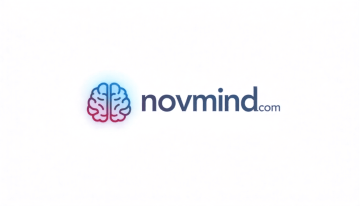Brainwaves & Flow: How AI Tunes Into Our Neural Frequencies
When it comes to entering a state of deep focus or « flow », the brain’s electrical rhythms—known as brainwaves—play a crucial role. But did you know that artificial intelligence is learning how to read, respond to, and even optimize these patterns to boost your productivity? In this article, we’ll explore how different brainwave states influence focus and how smart technologies use this knowledge to support mental performance.
Curious how this ties into the bigger picture? Read the pillar article: AI For Flow: Can Smart Tech Really Improve Focus?
What Are Brainwaves?
Brainwaves are electrical impulses in the brain, generated by neurons communicating with one another. These oscillations vary in frequency and are measured in Hertz (Hz). The main types of brainwaves include:
- Delta (0.5–4 Hz): Deep sleep and unconsciousness
- Theta (4–8 Hz): Light sleep, meditation, and creativity
- Alpha (8–12 Hz): Relaxed focus, calm alertness
- Beta (12–35 Hz): Active thinking, problem-solving, and focus
- Gamma (35–100 Hz): High-level cognition and memory processing
When you’re « in the zone », your brain likely oscillates between alpha and low beta states, supporting calm focus and heightened awareness—essential ingredients for flow.
Brainwaves and the Science of Flow
According to neuroscientific studies, the flow state is often associated with an optimal blend of alpha and theta brainwaves. Alpha promotes relaxed concentration, while theta supports creativity and intuition. As focus intensifies, low beta waves help maintain engagement and task-specific attention.
Interestingly, during deep flow, parts of the prefrontal cortex actually quiet down—a phenomenon called transient hypofrontality. This mental shift explains why we lose track of time and self-consciousness when we’re deeply immersed in a task.
To explore more about how the brain’s structure contributes to flow, check out our supporting article: How Focus Works: A Neuroscience Snapshot.
How AI Interacts with Brainwaves
1. Neurofeedback Devices and AI
Modern neurofeedback tools like Muse and Flowtime use EEG sensors to detect your brainwave activity in real time. These devices connect with AI-driven apps that analyze your mental state and provide tailored feedback—guiding you back to optimal focus when your mind wanders.
The AI doesn’t just track patterns; it learns them. Over time, these systems adapt to your unique neural rhythms, fine-tuning their suggestions for breathing, posture, or soundscapes to keep you in the zone.
2. Personalized Flow Triggers
AI also leverages brainwave data to identify what environmental conditions help you enter flow. It might learn, for instance, that soft ambient music combined with mid-morning work sessions leads to ideal alpha-beta balance for you. These preferences are used to build dynamic environments that optimize your neural state in real time.
3. Predicting and Preventing Cognitive Fatigue
When beta waves spike for too long, mental fatigue sets in. AI-powered focus tools can detect this pattern and prompt micro-breaks or relaxation techniques to help reset your rhythm—preventing burnout and maintaining performance.
Benefits of AI-Tuned Brainwave Support
- Improved Concentration: AI identifies distractions early and guides you back to a focused state.
- Adaptive Coaching: Your routines and rhythms are used to design personalized focus protocols.
- Enhanced Creativity: By promoting alpha-theta states, AI tools foster mental states ideal for ideation and problem-solving.
Challenges and Ethical Considerations
While brainwave-based AI systems show promise, they raise important questions:
- Data Privacy: Your brainwave patterns are personal. How securely is this information stored and used?
- Dependency Risk: Over-reliance on these tools may weaken self-regulation skills over time.
- Mental Health: Misinterpreted data or overstimulation can lead to anxiety rather than calm.
For a deeper dive into the potential risks of using smart tech for focus, read our article: Downsides and Limitations of AI in Focus Enhancement.
What’s Next? The Future of Brain-AI Interfaces
We’re at the edge of a revolution in neurotechnology. Startups are already working on non-invasive brain-computer interfaces (BCIs) that use AI to decode intention and emotional state—not just focus. Future applications might include:
- Real-time brain-to-device communication
- Adaptive learning environments that change based on your mood or engagement level
- Therapeutic brainwave training for ADHD, anxiety, or PTSD
As these technologies evolve, the need for ethical frameworks, transparency, and user autonomy will become increasingly critical.
Conclusion
AI’s ability to interact with our brainwaves opens exciting possibilities for enhancing focus and flow. By tuning into the rhythms of the mind, smart technologies can help us work smarter—not harder. But like any powerful tool, it must be used wisely. When combined with self-awareness and intention, AI and brainwave synergy can be a transformative force for personal productivity and well-being.
Want to explore how other smart tech tools influence focus? Go back to the main article: AI For Flow: Can Smart Tech Really Improve Focus?

